
What do you know about axolotl ? An amazing
Axolotl has 6 red “horns” on its head, 4 short and thick legs, a pair of small eyes without eyelids, and a simple but polite smile.
A few years ago, it was call an alien creature by curious people. Now, this strange and cute animal has moved into residential buildings and has become a beloved pet friend in many families.
But what exactly is this creature with horns on its head and a tail behind it?
01 No horns, not a dragon
Although this strange creature has a majestic name – Axolotl, it has no horns and has nothing to do with a dragon.
The six “horns” on its head are actually its gills, which are organs used for breathing. The gills are usually red, and sometimes change color depending on the food it eats.

Their biological name is Ambystoma Mexicanum (doesn’t that big mouth sound very appropriate), also known as the American axolotl (it is used in experiments in high school biology textbooks), commonly known as the axolotl, and is an aquatic amphibian.
Yes, you heard it right, it is an amphibian that can only live in water.
Generally speaking, only the young of amphibians live in water. When they grow up, they can adapt to the land environment. This process is called metamorphosis. For example, the tadpoles you caught as a child will become toads when they grow up.
But the axolotl is a special case. Even if it has reached sexual maturity, it will not change its appearance and remain in the form of a juvenile throughout its life. This phenomenon is called “neotyping”.
This is because during the development process, the axolotls lacked thyroid hormones and could not grow further. Scientists have done experiments in which they injected hormones into young axolotls and they grew up to become salamanders.
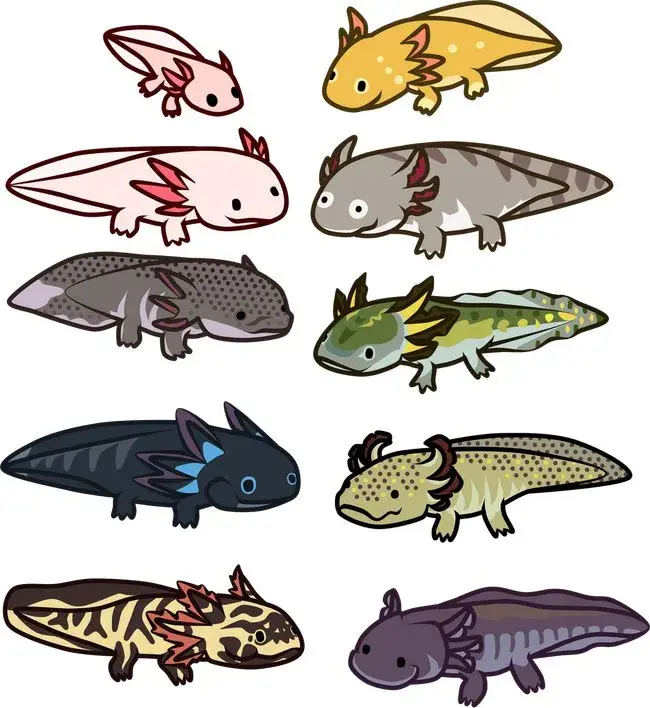
But this kind of human-influenced metamorphosis is difficult to succeed, and even if it succeeds, it will shorten their lifespan. Therefore, what we see are all axolotls with “baby faces”.
Mexican axolotl
The Mexican axolotl became famous in 1863 , when six adult Mexican axolotls were introduced to the Paris Botanical Garden, one of which was a pink variety.
Most of the Mexican axolotls bred in the pet market and laboratories are their descendants. After a series of selective breeding, there are now more than 30 varieties, such as black axolotls, gold foil axolotls, tiger-striped axolotls, etc.
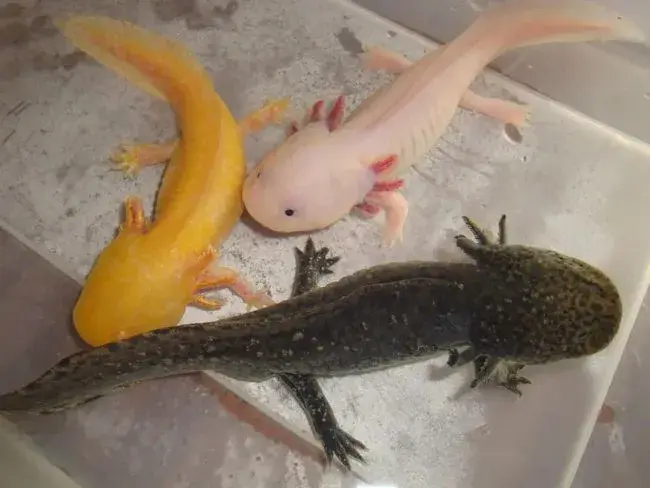
White axolotls are extremely rare in the wild; most are dark brown with black spots and are found in lakes near Mexico City.
These lakes once nurtured a variety of creatures, but due to urban expansion, industrial development, and human activities such as flood control and water pumping, the habitat of the axolotl is less than 10 square kilometers.
Currently, only a small number of wild Axolotls exist in Lake Xochimilco and Lake Zelgao. Therefore, wild Axolotls are consider critically endanger by the IUCN.
02 Can’t grow big, but can regenerate
What attracts scientists is not only the neoteny of the Axolotl, but also its amazing recovery ability.
When a limb of an axolotl is injure, it will not heal itself by forming a scar. But will grow a new limb within a few months. So sometimes you can see an axolotl with five legs.

Broken legs, tails, and gills are no big deal to them. Some cases even show that axolotls can regenerate important organs, such as the brain.
Around the 14th century AD, the Aztec civilization emerged in Mexico. At that time, people in the tribe discovered that the axolotl could regenerate its brain and organs. They were shocked and worshipped it as the incarnation of a god.
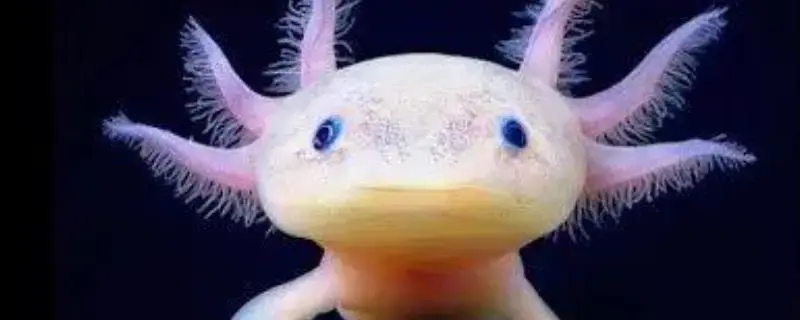
Past studies have suggested that the Axolotl has the ability to regenerate because its tissue cells can “grow in reverse,” transforming into pluripotent cells such as stem cells, and then differentiating into other cells.
However, the latest research shows that the tissue regeneration of Axolotl does not go through the process of transformation into pluripotent cells. But is directly form by the aggregation of blastema cells to form blastema cell clusters.
These blastema cells have memory ability. Those originally muscle cells can regenerate into muscle cells, and those originally derived from nerve sheath cells can regenerate into nerve sheath cells.
It’s like an army defeat by a war. The survivors with different divisions of labor can quickly grow and reorganize into a new, well-equipp army without the need to be reorganize.
However, the regenerative ability of adult axolotls will be significantly reduce after metamorphosis. So this may be the reason why they are unwilling to grow up.
03 Can it be raise? Is it easy to raise?
Although according to the standards set by the International Wildlife Trade, wild axolotls are classified as Class II protect animals. But as long as you can prove that they are artificially bred, you can keep them at home.
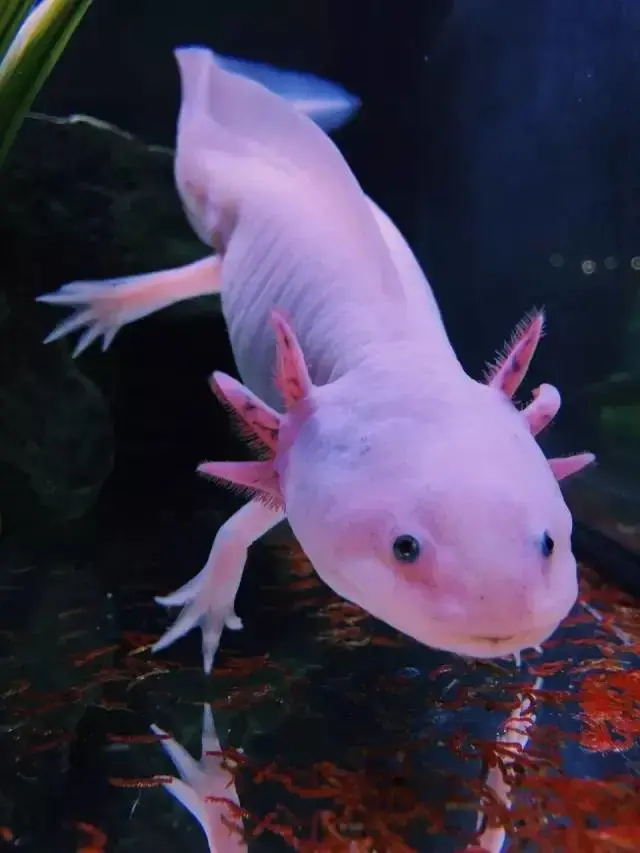
In fact, the Axolotl has been keep by humans for more than 150 years and is a very common pet in North America. With its pink appearance, cute expression and slightly clumsy behavior, the Axolotl has also won the title of “the cutest aquarium pet”.
The lifespan of wild Mexican axolotls is generally 10-15 years, while the lifespan of artificially bred axolotls is generally only 3-4 years. The main reason is improper breeding.
Raising axolotls is neither difficult nor easy. As long as you pay attention to the following points, it will only take a few minutes to get an “ageless cute god”.
Eyesight of the axolotl
First, the eyesight of the axolotl is not very good, so it mainly relies on smell to find food, and when eating, it opens its mouth wide and sucks hard. Therefore, small stones cannot be place in the breeding tank (not smaller than their mouths) to prevent them from being inhale, damaging their digestive tract, and even causing death.
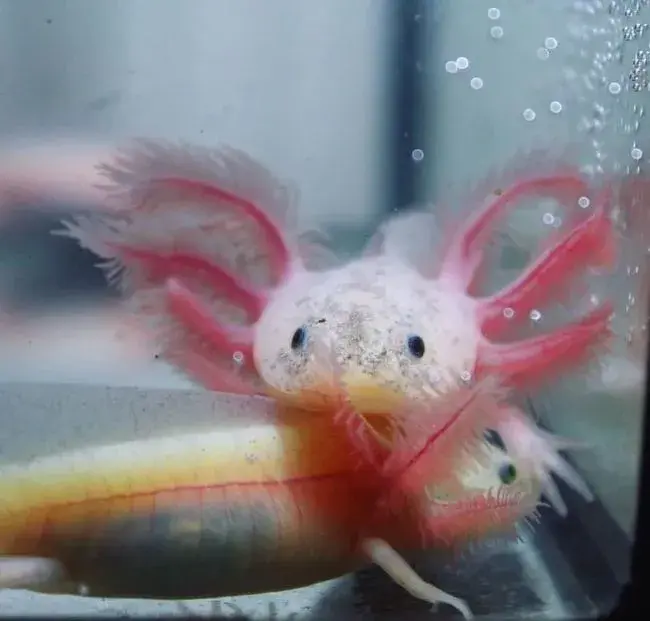
Secondly, due to poor eyesight, they often eat their own kind, causing damage. At the same time, they have no scales to protect themselves, and their red gill filaments look like red nematodes, so they are easily bite by other fish and turtles. Therefore, it is best to keep axolotls alone or in a larger fish tank.
Third, the native environmental temperature of the Axolotl is only 14~20℃, so the water temperature in the fish tank should also be keep low.
Fourthly, the Axolotl has a big appetite, so be sure to feed it enough food.
The fifth point, and the most important one, is not to release animals casually .


One thought on “What do you know about axolotl ? An amazing”